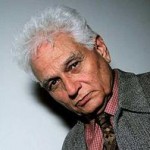First, from the example of Althusser’s interpellation,we know subjects could be attained a certain order of social existence because of the force of the law, an indifferent being could be transferred to the discursive or social domain. Butler argues there persists a relation of misrecognition between the law and the subject it compels and the distance or slippage between discursive command and appropriated effect. Butler believes every subject is kind of ambivalent, so there exists a possibility of subversion. That’s why Butler believes there are possibilities for the resignification of sex.
Butler analyzed Is Paris Burning of hooks on the basis of the documentary film. Butler thought a sense of defeat and a sense of insurrection coexist in the drag pageantry in. hooks raised the question whether the cultural location of the filmmaker is absent from the film, Butler thinks neither Livingston nor hooks considers the place and force of ethnicity in the articulation of kinship relations. Camera is empowered as phallic instrument to help arise transsexualization and transubstantiation, Livingston is the one who controls the camera, she has the power and ability to help those balck gay men become women. Butler said hooks questioned the validity of this film, because we don’t even know the real life of those queer people in the film, they seem no connection to the world out of drag houses. Anyway, this is a film shaped from a perspective and standpoint specific to Livingston, she decided what scenes to be filmed. Butler agrees with hooks that there is always a unmarked white gaze in the film. Butler found hooks neglected those light-skinned people in the film, not only those black gay people have an aspiration of transubstantiation into an idealized femininity and the status of whiteness.
Butler thought Paris Is Burning expressed a cultural reelaboration of kinship, the ball and the houses are a set of kinship relations, a social and discursive building of community. The resignification of the family by the reiterations of those terms “mother” and ”house” and an appropriation of dominant norms represents and realizes the kinship relations between those people in the “marginalized cultural” background in Paris Is Burning.
Butler deemed there is no necessary relation between drag and subversion, even though drag ball seems like a way of subversive behavior, the drag itself is a site of a certain ambivalence, a site of idealized identification as well. In the film, the denaturalization of gender and race has been realized, the differentiation between different genders and races has disappeared. Heterosexuality still plays a dominant role in their inner center, it’s the “cause” of lesbian desire, their expressions and behaviors of homosexuality come from the abjection and failure—a mask of heterosexuality, which is ambivalent itself. Different from the viewpoint of hooks, Butler places emphasis on the authenticity and possibility of the transsexualization of those people in the film. As to Butler, their identity is not determined by their physiological attributes, there are norms governing the intelligibility of sex, their conscious, the drag all give us the hint their gender is not easy to be defined. The drag has a force of symbolic reiterations, like the example of “name” or the “I”, it seems they change the way we see ourselves. But I have reservations about this opinion, I believe the objective fact–the body is undoubtably the determinant of who we are, our gender won’t be materialized by the dress nor the temperament, and the gender is always stable.


